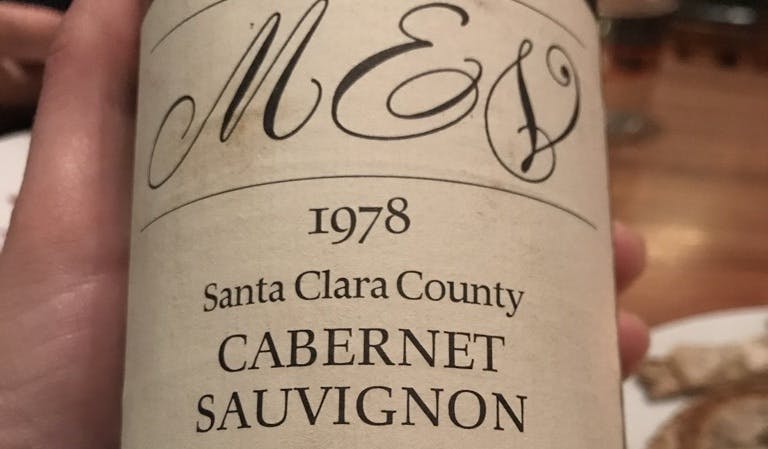She Hates Cabernet Sauvignon — Or Does She?
After having some of the grape’s confusing distinctions explained to her, a client was grateful for the added context and jumped at the chance to explore some new avenues of wine.

Figuring out your aversions in wine is just as important as honing in on your preferences. No one wants to waste time, money, or taste buds consuming something that doesn’t bring happiness. Yet avoiding those dislikes completely, based on limited experience and information, could mean missing out on a sea of fabulous bottles.
We all know that wine is a complex topic, that labeling is inconsistent, that every country has its own set of rules, and that because it’s an agricultural product, the contents are constantly shifting with each vintage. This leaves wine subject to gatekeeping by some who fancy themselves experts, while some offer information dumbed down in marketing materials for those who are only concerned with higher sales numbers.
The situation keeps timid or impatient consumers away from wine entirely, and others stuck to a narrow track of comfortable options — no seeking out new things, no deep diving into the mysteries of wine, and avoiding what could turn into a lifetime of pleasure seeking.
A glaring example of this situation was illustrated for me this week by a client: She hates Cabernet Sauvignon. Or does she?
Three years ago, I’d started to build out a cellar for the client and her husband. They love wine, but had a relatively narrow experience tasting that centered mostly on a few European classics. As per usual, I start building rapport by curating an assortment of wines to try, extrapolated from their known preferences. It’s a way of letting them know I understand their tastes, as well as broadening their palates and finding more treasures for them to enjoy and build out their cellar with.
Their preferences were Nebbiolo, Burgundy, Bordeaux, Oregon Pinot Noir, and Croatian wine (they were introduced by my client from Croatia who’d enlightened them to the excellent, under-the-radar wines of his homeland). Those five categories paint a clear picture of the kinds of wines they like and give me many avenues to explore with them.
Oregon Pinot Noir, which is their daily drinker, is a great counterpoint to the other European powerhouses they mentioned. It means they aren’t afraid of some fresh fruit notes, softer acidity and tannin, with slightly higher alcohol levels than you’d find in Old World wines, even while showing they still prize balance and elegance above all else.
My first round of suggestions included some of my favorite California Cabernet Sauvignons, atypical of the Napa Valley norm. They shared a lot of the finesse and structural components of their French counterparts, with the kiss of California sunshine fruit. I was shut down; the wife hated Cabernet Sauvignon. No problem, this round was for gaining their trust, not for insisting I had all the answers.
Fast-forward three years, and the wife reached out to request bottles of Calon Segur, Saint-Estèphe, a Left Bank Bordeaux, which she loved and wanted more of, along with this request: “There’s a cab I’ve actually enjoyed a couple times” (each time commenting, “Oh wow, I usually hate cabs and each time its been this same wine.”). The second wine was Jordan Cabernet Sauvignon from Sonoma Valley.
It was the perfect opportunity to give her information she could use to open up new paths of exploration. I had known from the jump she actually liked Cabernet Sauvignon, because she’d been drinking it all along in the form of Left Bank Bordeaux, which contains 50-100 percent of the grape depending on the chateau and vintage. The reason she didn’t know was thanks to inconsistent labeling.
French wines rarely list the grape variety on the bottle; instead, because of their staunch belief in terroir, they simply display the origin. They believe it is a better indicator of what to expect in a bottle than the grape itself. Europe has had thousands of years to match the perfect grape variety to best express the location they are planted in. Once the match is established, those grape varieties become almost superfluous (though they are codified into law, as part of the Appellation d’Origine Contrôlée system) and are just one aspect of terroir.
Sancerre should all taste like Sancerre. Whereas Sauvignon Blanc, the grape used to make Sancerre, tastes very different when grown in New Zealand, Napa Valley, or Austria because the terroir is different. The same holds true for Chardonnay in Chablis, Merlot in Pomerol, etc. To find out the grape behind the place, you have to take the extra step of researching the base material.
Because of the ubiquity of French wine, the grape varieties grown there are most often the ones found in regions outside of Europe: Chenin Blanc in South Africa, Syrah in Australia, Malbec in Argentina, and Cabernet Sauvignon in Napa Valley, etc. But the grapes were chosen mostly based on market demands, with suitability to site secondary, and with less than 200 years to find the best vineyard plots in their new found homes. (Chenin Blanc got a head start: It was brought to South Africa in 1655.)
In the case of wines labeled Cabernet Sauvignon, which would mostly come from countries outside of Europe, my client’s aversion was understandable. California was one of the first places outside Bordeaux to establish itself as a center of Cabernet Sauvignon starting in the 1850s. Originally the wines were much closer in style to their Bordeaux counterparts, and often even labeled “Bordeaux” or “California Bordeaux.”
The rise of Parkerism in the 1980s saw a push for ever riper, richer, oakier, more bombastic wines; the restrained French styles fell out of favor. A few producers, like Jordan, Ramey, Forman, Corison, Dominus, and Dunn, stuck to their guns and didn’t fall for the fads, losing many of their customers in the process.
It took until the mid-aughts for a new generation to establish wineries focused on those old-school styles in what is now referred to as the New California movement. Labels like Matthiasson, Arnot-Roberts, and Di Costanzo don’t have multinational corporate marketing budgets and, though adored by wine insiders, are overlooked by the general public. Those who want the bigger styles of California wine find these new wines too thin, acidic, and tannic. Those, like my client, who’ve only tried and abhor the high-octane wines avoid ever trying new ones, lumping all of California under one over-wrought banner.
After having some of these confusing distinctions explained to her, she was grateful for the added context and jumped at the chance to explore some of these new avenues of wine. She’s also not the only one. My own mother exclaimed that she unequivocally “hated Syrah,” never having tasted one from the Northern Rhone. And no grape is more unfairly maligned than the wholly misunderstood Riesling, arguably the greatest white variety in the world, and certainly the most dynamic.
If there is something out there you’ve set your heart against, I encourage you to bring up the issue with your nearest wine expert. Who knows what joy could be just out of your reach?

